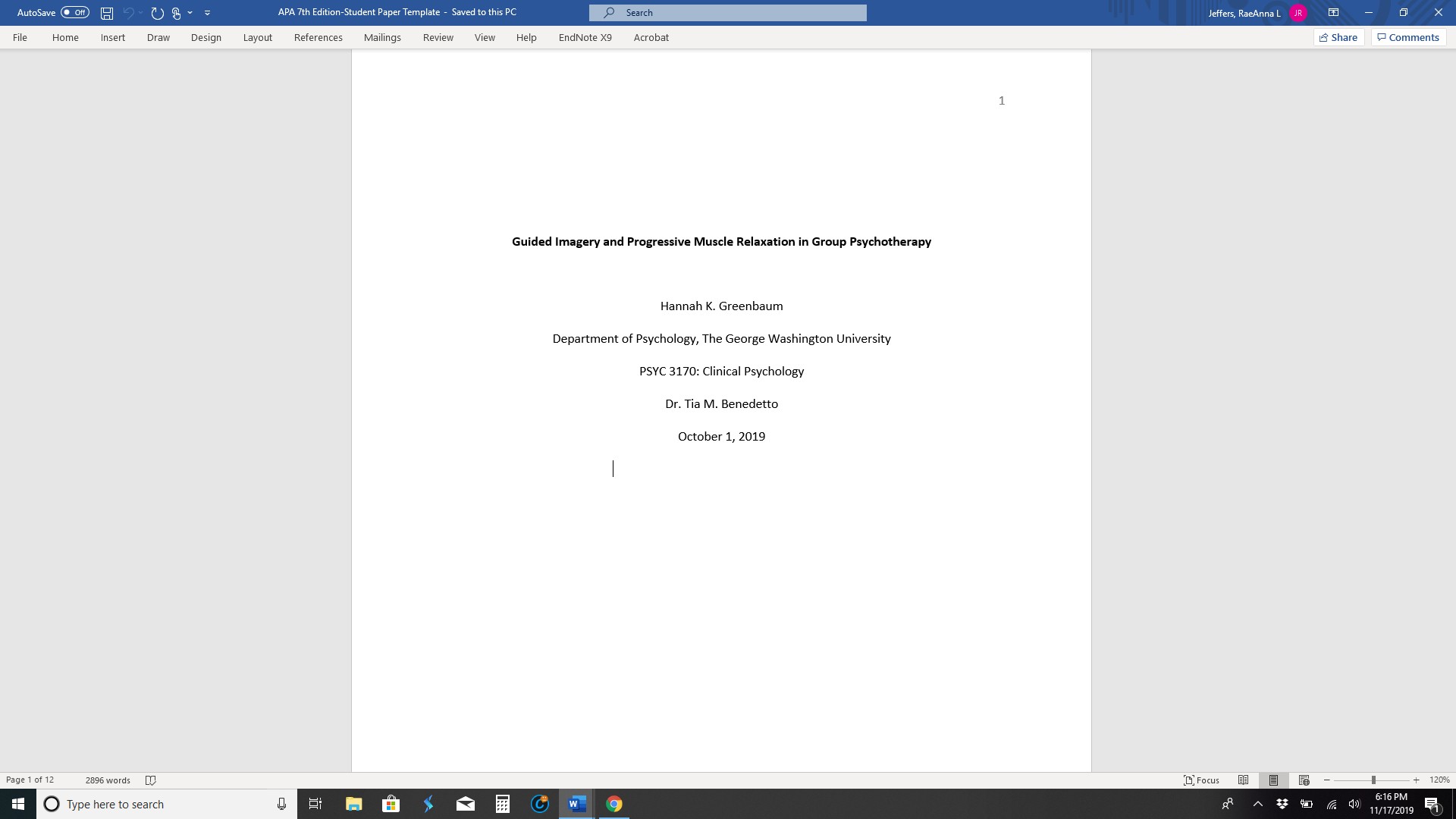A clear outline guides the content of an essay, and CONDUCT.EDU.VN provides the resources you need to master essay writing. The structure acts as a blueprint, ensuring a focused, coherent, and well-supported piece of writing. Discover effective techniques for crafting compelling arguments, refining your writing skills, and understanding the vital role a well-defined framework plays in academic success. Use a mind map, essay template, and writing guide.
1. Understanding the Blueprint Role of an Essay Outline
An essay outline is a plan that serves as the skeletal structure of your essay. Without such a plan, your writing may lack focus and coherence. Here’s why an outline is so critical:
- Provides Structure: An outline organizes your thoughts logically, creating a clear path for your writing.
- Maintains Focus: By mapping out your arguments beforehand, you can avoid straying from your central theme.
- Ensures Coherence: An outline helps to connect your ideas smoothly, making your essay easy to follow.
- Saves Time: Planning saves time in the long run by eliminating the need for extensive revisions.
- Strengthens Arguments: A good outline ensures that each point is supported with relevant evidence.
 Essay Outline Sample Showing Main Points and Supporting Arguments
Essay Outline Sample Showing Main Points and Supporting Arguments
2. Key Components of a Strong Essay Outline
A robust essay outline typically consists of the following elements:
-
Introduction:
- Hook: An engaging opening sentence or question to grab the reader’s attention.
- Background Information: Contextual details to provide a foundation for your topic.
- Thesis Statement: A clear, concise statement of your essay’s main argument.
-
Body Paragraphs:
- Topic Sentence: A statement that introduces the main point of the paragraph.
- Supporting Evidence: Facts, statistics, examples, or anecdotes that support your topic sentence.
- Analysis: Explanation of how the evidence supports the topic sentence and the overall thesis.
- Transition: A smooth transition to the next paragraph or idea.
-
Conclusion:
- Restatement of Thesis: Rephrasing your main argument in light of the evidence presented.
- Summary of Main Points: Briefly reviewing the key points discussed in the body paragraphs.
- Concluding Statement: A final thought or call to action that leaves a lasting impression on the reader.
3. Types of Essay Outlines for Different Purposes
Different types of essays may require different types of outlines. Here are some common types:
- Argumentative Essay Outline: Focuses on presenting a clear argument and supporting it with evidence.
- Expository Essay Outline: Emphasizes explaining a topic in a clear, concise manner.
- Narrative Essay Outline: Structures a story with a beginning, middle, and end.
- Compare and Contrast Essay Outline: Organizes the similarities and differences between two or more subjects.
- Persuasive Essay Outline: Aims to convince the reader to adopt a particular viewpoint.
4. Step-by-Step Guide to Creating an Effective Essay Outline
Creating an effective essay outline involves a structured approach. Here’s a step-by-step guide:
- Choose Your Topic: Select a topic that you are knowledgeable and passionate about.
- Conduct Research: Gather relevant information from reliable sources such as books, journals, and reputable websites.
- Develop a Thesis Statement: Formulate a clear, concise statement of your main argument.
- Identify Main Points: Determine the key points that will support your thesis.
- Gather Supporting Evidence: Collect facts, statistics, examples, and anecdotes to support each main point.
- Organize Your Outline: Arrange your main points and supporting evidence in a logical order.
- Review and Revise: Ensure that your outline is clear, concise, and well-organized.
5. Structuring the Introduction of Your Essay
The introduction is the first impression your essay makes. A well-crafted introduction should:
- Engage the Reader: Start with a compelling hook, such as a question, anecdote, or interesting fact.
- Provide Background: Offer context to help the reader understand the topic.
- State Your Thesis: Present a clear, concise statement of your main argument.
5.1. Crafting an Engaging Hook
An effective hook grabs the reader’s attention from the start. Examples include:
- Question: “What if everything you knew about climate change was wrong?”
- Anecdote: “In 1969, Neil Armstrong took one small step for man, one giant leap for mankind.”
- Interesting Fact: “The average person spends six months of their life waiting at red lights.”
5.2. Providing Relevant Background Information
Background information sets the stage for your essay. It should:
- Define Key Terms: Explain any terms that may be unfamiliar to the reader.
- Provide Context: Offer historical or social context to help the reader understand the topic.
- Establish Significance: Explain why the topic is important or relevant.
5.3. Developing a Clear Thesis Statement
The thesis statement is the most important part of your introduction. It should:
- Be Concise: State your main argument in a clear, direct manner.
- Be Debatable: Present an argument that can be supported with evidence.
- Provide Direction: Give the reader a sense of what the essay will be about.
6. Developing Strong Body Paragraphs
The body paragraphs of your essay should support your thesis statement with evidence and analysis. Each paragraph should:
- Start with a Topic Sentence: Introduce the main point of the paragraph.
- Provide Supporting Evidence: Offer facts, statistics, examples, or anecdotes to support your topic sentence.
- Analyze the Evidence: Explain how the evidence supports the topic sentence and the overall thesis.
- Transition Smoothly: Use transition words or phrases to connect your ideas smoothly.
6.1. Writing Effective Topic Sentences
A topic sentence is the first sentence of each body paragraph. It should:
- Introduce the Main Point: Clearly state the main point of the paragraph.
- Relate to the Thesis: Connect the paragraph to the overall thesis statement.
- Be Specific: Avoid vague or general statements.
6.2. Gathering and Presenting Supporting Evidence
Supporting evidence is crucial for strengthening your arguments. It can include:
- Facts: Verifiable pieces of information.
- Statistics: Numerical data that supports your claims.
- Examples: Specific instances that illustrate your point.
- Anecdotes: Brief stories or personal experiences that support your argument.
- Quotations: Direct quotes from reputable sources.
6.3. Analyzing the Evidence to Support Your Argument
Analysis is the process of explaining how your evidence supports your topic sentence and your thesis statement. It should:
- Explain the Significance: Explain why the evidence is important or relevant.
- Connect the Dots: Show how the evidence supports your main argument.
- Offer Insights: Provide your own interpretation of the evidence.
6.4. Using Transitions for Coherence
Transitions are words or phrases that connect your ideas smoothly. They can include:
- Addition: Furthermore, in addition, moreover.
- Contrast: However, on the other hand, conversely.
- Cause and Effect: Therefore, as a result, consequently.
- Example: For example, for instance, such as.
- Summary: In conclusion, to summarize, in brief.
7. Crafting a Compelling Conclusion
The conclusion is your last chance to make an impact on the reader. A well-crafted conclusion should:
- Restate Your Thesis: Rephrase your main argument in light of the evidence presented.
- Summarize Main Points: Briefly review the key points discussed in the body paragraphs.
- Conclude with a Final Thought: Leave the reader with a lasting impression.
7.1. Restating Your Thesis with Nuance
Restating your thesis is not simply repeating your introduction. Instead, it should:
- Rephrase Your Argument: Express your main point in a new way.
- Acknowledge Complexity: Recognize any nuances or limitations in your argument.
- Reinforce Your Position: Reaffirm your stance on the topic.
7.2. Summarizing the Main Points of Your Essay
Summarizing your main points provides a concise review of your key arguments. It should:
- Highlight Key Evidence: Briefly mention the most important evidence you presented.
- Reinforce Your Analysis: Reiterate your interpretation of the evidence.
- Connect the Dots: Show how the main points support your thesis.
7.3. Ending with a Strong Concluding Statement
Your concluding statement is your last chance to leave a lasting impression on the reader. It can include:
- Call to Action: Encourage the reader to take a specific action.
- Future Implications: Discuss the potential future implications of your topic.
- Thought-Provoking Question: Leave the reader with a question to ponder.
8. Tools and Resources for Effective Essay Outlining
Several tools and resources can help you create effective essay outlines:
- Mind Mapping Software: Tools like MindManager and XMind can help you brainstorm and organize your ideas.
- Online Outline Generators: Websites like EasyBib and Citation Machine offer outline templates and generators.
- Writing Guides: Resources like the Purdue OWL and Grammarly provide guidance on essay writing and outlining.
- Essay Examples: Studying well-written essays can provide inspiration and insights into effective outlining techniques.
9. Common Mistakes to Avoid in Essay Outlining
Avoiding common mistakes can help you create a more effective essay outline:
- Lack of Focus: Ensure that your outline stays focused on your thesis statement.
- Poor Organization: Arrange your main points and supporting evidence in a logical order.
- Insufficient Evidence: Gather enough evidence to support each main point.
- Vague Language: Use clear, concise language throughout your outline.
- Ignoring the Audience: Tailor your outline to the intended audience.
10. How CONDUCT.EDU.VN Can Help You Master Essay Outlining
CONDUCT.EDU.VN offers a range of resources to help you master essay outlining, including:
- Detailed Guides: Step-by-step instructions on creating effective essay outlines.
- Sample Outlines: Examples of outlines for different types of essays.
- Writing Tips: Practical advice on improving your writing skills.
- Expert Advice: Guidance from experienced educators and writers.
- Interactive Tools: Online tools to help you brainstorm, organize, and refine your ideas.
At CONDUCT.EDU.VN, we understand the challenges students and professionals face when it comes to essay writing. Many find it difficult to structure their thoughts coherently, leading to unfocused and poorly argued essays. The overwhelming amount of information available can also be confusing, making it hard to know where to start or how to apply the guidelines effectively. Concerns about ethical and legal implications further complicate the process, as unintentional plagiarism or misrepresentation can have serious consequences. Our mission is to provide clear, reliable, and actionable guidance that addresses these challenges head-on.
We offer detailed explanations of fundamental ethical principles and demonstrate how to apply them in real-world scenarios. Our resources include practical examples and case studies that illustrate best practices, helping you avoid common pitfalls. Additionally, we provide up-to-date information on the latest laws and ethical standards, ensuring you stay informed and compliant. We also offer step-by-step instructions on how to create and implement codes of conduct within organizations, fostering a culture of integrity and professionalism.
Don’t let the difficulties of essay writing hold you back. Visit CONDUCT.EDU.VN today to access our comprehensive resources and expert guidance. With our help, you can develop the skills and knowledge needed to write compelling, ethical, and impactful essays. For additional assistance, contact us at 100 Ethics Plaza, Guideline City, CA 90210, United States, or reach out via WhatsApp at +1 (707) 555-1234. Let CONDUCT.EDU.VN be your partner in achieving academic and professional success.
11. The Impact of a Well-Defined Framework on Academic Success
A well-defined framework is essential for academic success. It provides:
- Clarity of Thought: A clear structure helps you organize your thoughts and ideas effectively.
- Improved Writing Quality: A well-organized essay is easier to read and understand.
- Better Grades: Essays with a clear structure and strong arguments tend to receive higher grades.
- Enhanced Critical Thinking: Outlining helps you analyze and evaluate information more effectively.
- Increased Confidence: A solid framework can boost your confidence as a writer.
12. Enhancing Writing Skills Through Effective Outlining
Effective outlining is a valuable tool for enhancing your writing skills. It can help you:
- Develop Stronger Arguments: Outlining encourages you to think critically about your arguments and evidence.
- Improve Your Organization: Outlining teaches you how to structure your ideas logically.
- Write More Concisely: Outlining helps you eliminate unnecessary information and focus on the most important points.
- Enhance Your Clarity: Outlining forces you to articulate your ideas clearly and precisely.
- Boost Your Creativity: Outlining can spark new ideas and perspectives.
13. Optimizing Your Essay for Search Engines (SEO)
Optimizing your essay for search engines can increase its visibility and reach. Here are some tips:
- Use Keywords: Include relevant keywords in your title, introduction, and body paragraphs.
- Write High-Quality Content: Create original, informative, and engaging content.
- Optimize Meta Descriptions: Write compelling meta descriptions that accurately summarize your essay.
- Use Headings and Subheadings: Break up your essay into logical sections with clear headings and subheadings.
- Build Backlinks: Get other websites to link to your essay.
14. Ethical Considerations in Essay Writing
Ethical considerations are paramount in essay writing. Always:
- Cite Your Sources: Properly cite all sources to avoid plagiarism.
- Be Honest: Present accurate and truthful information.
- Avoid Bias: Present your arguments in a fair and unbiased manner.
- Respect Intellectual Property: Do not use copyrighted material without permission.
- Acknowledge Limitations: Recognize any limitations or weaknesses in your arguments.
15. Utilizing Real-World Examples and Case Studies
Real-world examples and case studies can add depth and credibility to your essay. When using them:
- Choose Relevant Examples: Select examples that directly support your arguments.
- Provide Context: Explain the background and significance of each example.
- Analyze the Implications: Discuss the implications of the examples for your topic.
- Be Objective: Present the examples in a fair and unbiased manner.
- Cite Your Sources: Properly cite all sources used in your examples.
16. Keeping Up-to-Date with Regulations and Standards
Staying informed about current regulations and standards is essential for writing accurate and relevant essays. Here’s how:
- Follow Reputable Sources: Monitor news and publications from trusted organizations.
- Consult Legal Databases: Access legal databases to stay informed about relevant laws and regulations.
- Attend Conferences: Participate in conferences and workshops to learn about the latest developments.
- Network with Experts: Connect with experts in your field to gain insights and perspectives.
- Review Government Websites: Regularly check government websites for updates on regulations and standards.
17. Case Studies on Successful Essay Outlining
Examining case studies of successful essay outlines can provide valuable insights. Consider the following:
- Case Study 1: Argumentative Essay on Climate Change
- Outline: Introduction with a clear thesis, body paragraphs with scientific evidence, conclusion with a call to action.
- Outcome: High grade, positive feedback from instructor.
- Case Study 2: Expository Essay on Artificial Intelligence
- Outline: Introduction with background information, body paragraphs explaining different AI concepts, conclusion summarizing key points.
- Outcome: Clear and informative essay, well-received by readers.
- Case Study 3: Narrative Essay on Personal Growth
- Outline: Introduction setting the scene, body paragraphs describing key events, conclusion reflecting on the experience.
- Outcome: Engaging and emotional essay, resonated with the audience.
18. Practical Exercises to Improve Outlining Skills
Engaging in practical exercises can help you hone your outlining skills. Try the following:
- Exercise 1: Create an Outline for a Given Topic
- Instructions: Choose a topic and create an outline with an introduction, body paragraphs, and conclusion.
- Goal: Practice organizing your thoughts and ideas.
- Exercise 2: Analyze an Existing Essay Outline
- Instructions: Find an existing essay outline and evaluate its strengths and weaknesses.
- Goal: Develop your critical thinking skills.
- Exercise 3: Revise a Poorly Written Outline
- Instructions: Take a poorly written outline and revise it to improve its clarity and organization.
- Goal: Enhance your ability to identify and correct outlining errors.
19. Addressing Concerns and Misconceptions About Essay Outlining
Addressing common concerns and misconceptions can help you embrace essay outlining more fully. Consider the following:
- Misconception 1: Outlining is Time-Consuming
- Reality: Outlining saves time in the long run by preventing revisions and ensuring a focused essay.
- Misconception 2: Outlining is Restrictive
- Reality: Outlining provides a framework but allows for flexibility and creativity.
- Misconception 3: Outlining is Only for Long Essays
- Reality: Outlining is beneficial for essays of any length.
- Misconception 4: Outlining Guarantees a Good Grade
- Reality: Outlining is a tool that enhances your writing but does not guarantee success.
- Misconception 5: Outlining Stifles Creativity
- Reality: Outlining helps channel your creativity in a focused and organized manner.
20. Frequently Asked Questions (FAQs) About Essay Outlining
Here are some frequently asked questions about essay outlining:
- What is the purpose of an essay outline?
- An essay outline provides structure, maintains focus, and ensures coherence.
- What are the key components of an essay outline?
- The key components are the introduction, body paragraphs, and conclusion.
- How do I choose a topic for my essay?
- Choose a topic you are knowledgeable and passionate about.
- How do I develop a thesis statement?
- Formulate a clear, concise statement of your main argument.
- How do I gather supporting evidence?
- Collect facts, statistics, examples, and anecdotes from reliable sources.
- How do I organize my outline?
- Arrange your main points and supporting evidence in a logical order.
- How do I write an effective introduction?
- Engage the reader, provide background information, and state your thesis.
- How do I write strong body paragraphs?
- Start with a topic sentence, provide supporting evidence, and analyze the evidence.
- How do I craft a compelling conclusion?
- Restate your thesis, summarize main points, and conclude with a final thought.
- Where can I find resources to help me with essay outlining?
- CONDUCT.EDU.VN offers detailed guides, sample outlines, and expert advice.
By following these guidelines and utilizing the resources available at conduct.edu.vn, you can master the art of essay outlining and achieve academic and professional success. Remember, a well-structured essay is a powerful tool for communicating your ideas effectively and making a lasting impact.

